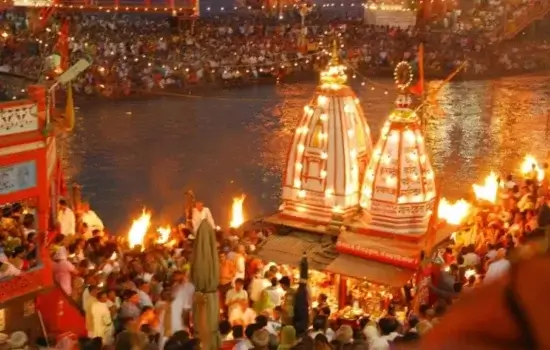The Kumbh Mela stands as a testament to India’s rich spiritual heritage, drawing millions of devotees to its sacred gatherings. As we approach the Maha Kumbh Mela in 2025, it’s essential to understand the distinctions between the various iterations of this festival: the Kumbh Mela, Ardh Kumbh Mela, and Maha Kumbh Mela.
Kumbh Mela

The Kumbh Mela is a Hindu pilgrimage that occurs every 12 years at four riverbank pilgrimage sites: Prayagraj (Allahabad), Haridwar, Ujjain, and Nashik. The festival’s timing and location are determined by specific astrological positions of Jupiter, the Sun, and the Moon. Devotees believe that bathing in the sacred rivers during the Kumbh Mela cleanses them of sins and aids in attaining Moksha (liberation).
Ardh Kumbh Mela

The term ‘Ardh’ translates to ‘half,’ indicating that the Ardh Kumbh Mela occurs every six years, midway between the Kumbh Melas, at two primary locations: Haridwar and Prayagraj. While it attracts a significant number of pilgrims, the scale is relatively smaller compared to the Kumbh Mela. The rituals and significance remain consistent, focusing on spiritual purification and community participation.
Maha Kumbh Mela

The Maha Kumbh Mela is the most auspicious and grandest of the Kumbh festivals, occurring once every 144 years, after 12 cycles of the Kumbh Mela. This rare event is exclusively held in Prayagraj, at the confluence of the Ganges, Yamuna, and the mythical Saraswati rivers. The upcoming Maha Kumbh Mela in 2025 is anticipated to draw an unprecedented number of devotees, with estimates suggesting participation from over 400 million people.
Significance and Rituals
All three iterations of the Kumbh Mela share common rituals, with the primary focus on the ‘Shahi Snan’ or royal bath, where ascetics, saints, and pilgrims immerse themselves in the sacred rivers. This act is believed to purify the soul and absolve sins. The festivals also serve as platforms for spiritual discourse, cultural performances, and the dissemination of religious teachings.
Astrological Determination
The timing of each Kumbh Mela is intricately linked to astrological alignments:
- Kumbh Mela: Occurs when Jupiter is in Aquarius and the Sun enters Aries.
- Ardh Kumbh Mela: Takes place when Jupiter is in Leo and the Sun is in Capricorn.
- Maha Kumbh Mela: Aligned with a specific combination of zodiac positions that repeat every 144 years.
Cultural and Economic Impact
The Kumbh Mela, in all its forms, significantly impacts the host cities. The influx of millions of pilgrims necessitates extensive infrastructure development, including temporary housing, sanitation facilities, and healthcare services. The 2025 Maha Kumbh Mela in Prayagraj, for instance, has led to the creation of a separate administrative district to manage the event’s logistics.
Conclusion
The Kumbh Mela, Ardh Kumbh Mela, and Maha Kumbh Mela are profound expressions of faith, spirituality, and cultural unity in India. Each festival, with its unique timing and significance, offers devotees an opportunity to engage in deep spiritual practices and communal harmony. As we prepare for the Maha Kumbh Mela in 2025, understanding these distinctions enriches our appreciation of this ancient tradition and its enduring relevance in contemporary society.

Hello, I’m Kapil Kumar, a seasoned SEO expert and blogger at WinnersList.in. My mission is to spotlight exceptional individuals and organizations across various domains. Through curated lists, profiles, and inspiring stories, I aim to celebrate outstanding achievements and inspire the next generation of champions. Join me in this journey.
